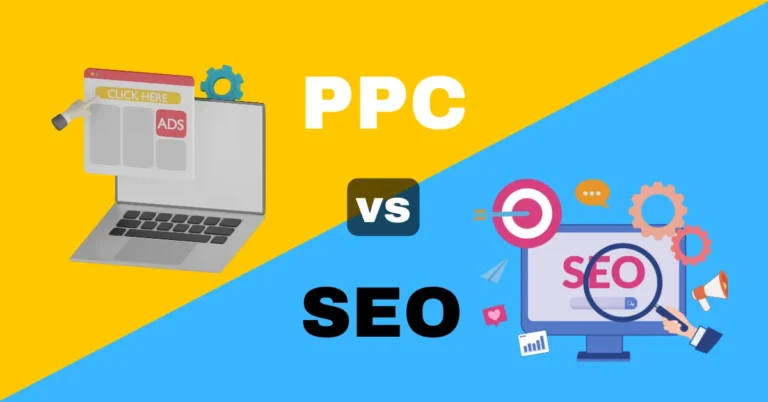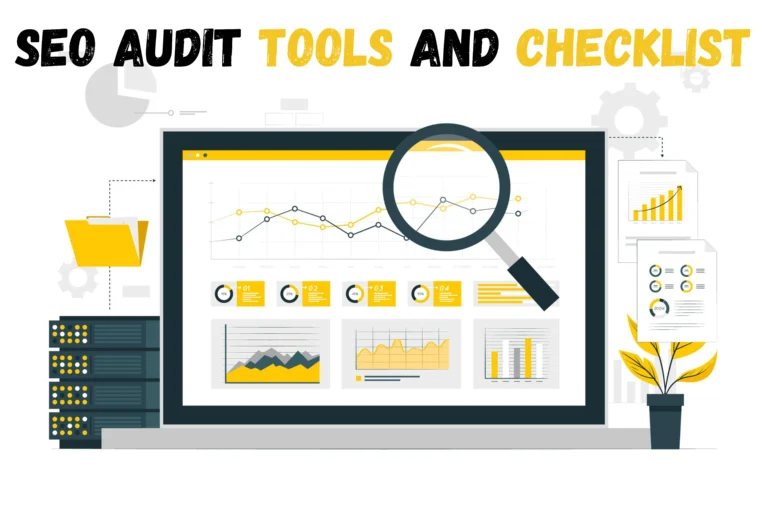White Hat SEO vs Black Hat SEO in 2025 is more than just one industry debate—this is a defined factor for your brand’s online visibility and reliability. With the rise of AI-operated search engine algorithms, the boundaries between moral adaptation and manipulating strategy have never become clear, especially through the 2025 core updates of Google.
Today, Google rewards websites that follow human practices, such as publishing high-quality materials, constructing natural backlinks, and aligning with E-E-A-T principles.
But make it real for a moment: Imagine waking up to remove your website completely from the search results. All your traffic, leads, and hard-earned rankings disappeared. It is not imaginary. This occurs when brands’ keywords rely on old black hat techniques such as keyword stuffing, cloaking, or AI-related spam materials.
This guide dives deeply into the development of SEO, explains what is safe and what is risky, and suggests how to prove your strategy in the future using white hat SEO methods. In 2025, SEO is not only about ranking—it is about belief and relevance.
What is White Hat SEO in 2025?
White hat SEO refers to moral, Google-approved strategies that prefer long-term trust and UX over shortcuts. In 2025, these techniques will no longer be a choice; they will be necessary.
Google’s algorithms have developed to focus on intentions, references, and value. This means that today, high ranking is not only about keywords; this is about proving your reliability, relevance, and utility. If you want to win in this era of searching, white hat SEO is the way to go.
Today, some of the most effective white hat SEO is included in strategies:
- Quality content writing that solves real problems and satisfies search intent
- Natural backlinks from high-quality sites through moral link-building, such as outreach and guest posting
- User-focused design that improves page speed and overall site experience
- Semantic SEO using topic clusters, LSI keywords, and categorized data
- Alignment with E-E-A-T principles: Experience, authority, reliability
The true benefit of White Hat SEO lies in sustainability. You’re building authority and visibility that will withstand future updates. Unlike risky tactics on the other side of the White Hat SEO vs Black Hat SEO debate, ethical SEO builds a brand that Google trusts—and users love.
Investing in White Hat SEO means choosing stability over shortcuts—and in 2025, that’s the smartest move any business can make.
What is Black Hat SEO in 2025?
White Hat SEO vs Black Hat SEO continues to woo businesses with a black hat shortcut that promises rapid results. But in 2025, the Black Hat SEO is more sophisticated—and is riskier than ever.
At its core, Black Hat SEO refers to any strategy that violates Google’s webmaster guidelines. The purpose of these methods is to manipulate the ranking without adding the actual value for users. Although they can promote a short-term ranking, they also take a high risk of being deindexed or punished.
Here is the most commonly used black hat SEO strategy in 2025:
- AI-generated Spam Material: Low-quality, auto-generated text is designed to fill pages or target keywords without offering the actual answer.
- PBN links: Interlinked sites are used to pass fake authority and manipulate backlink profiles.
- Automatic Link Building Tools: Bots that make large-scale backlinks, often from irrelevant or spammy sources.
- Cloaking, keyword stuffing, and doorway pages: hiding true material from users, jamming in repeated keywords, or building pages only to mislead funnel traffic.
The modern black hat strategy has become AI-aware, often attempting to “trick” machine learning filters by mimicking natural patterns. But Google’s algorithms have also developed, making it easier to detect these tricks.
In the long run, the Black Hat SEO only offers a temporary win. Penalties—traffic drops, lost rankings, and domain blacklisting—can permanently damage the online appearance of your brand.
It is now more important to choose wisely than ever before in the debate between White Hat SEO vs Black Hat SEO.
The Rise of “Gray Hat SEO”
In the ongoing debate of White Hat SEO vs Black Hat SEO, a third way has surfaced: Gray Hat SEO. This refers to strategies that do not break the search engine regulations, but the moral boundaries are only pushed enough to get a profit.
The Common Gray Hat strategy in 2025 includes using expired domains for backlinks, publishing materials on parasitic SEO platforms (such as high-quality third-party sites), and purchasing an aged domain for the current authority.
While these techniques aren’t completely restricted, they live in a legal and ethical gray area. They attract because they work, but they are risky, especially as Google’s AI systems become smart in identifying unnatural patterns.
Many SEO agencies run on this line, trying to balance performance. But like anything in SEO, the safest long-term bets still lean towards transparency—some white hat SEO guarantees.
How to fight Black Hat SEO in Google 2025
In the developed battle of the White Hat SEO vs Black Hat SEO, Google has significantly upgraded its defense systems in 2025. With the integration of advanced AI-operated spam detection, Google can now automatically identify manipulative behavior, from link schemes to lower-quality AI materials.
A recent example is a normal e-commerce brand that depends on automatic backlinks and cloaked content so that the SERPs climb quickly. Within weeks, they collided with a manual action penalty. Their site was deindexed, traffic declined by 90%, and sales plummeted.
The latest updates of Google prioritize human-first, reliable websites. The algorithm now not only evaluates the keywords but also the references, link quality, meaning depth, and authorship.
Trying to game the system can bring short-term results, but has extended effects on visibility. This is the reason that in the continuing argument of White Hat SEO vs Black Hat SEO, the moral path remains the safest.
Key Differences Between White Hat vs Black Hat SEO
| Criteria | White Hat SEO | Black Hat SEO |
| Techniques Used | Ethical, user-centric strategies | Manipulative, rule-breaking methods |
| Long-Term Value | Sustainable and trusted by search engines | Risky and often leads to short-term gains |
| Risk of Penalty | Low—aligns with Google’s guidelines | Extremely High—violates policies |
| Examples | On-page SEO, quality backlinks, and content writing | Link farms, cloaking, and hidden text |
This section helps reinforce the contrast in the White Hat SEO vs Black Hat SEO discussion in a reader-friendly format.
How to Know If Your SEO is White or Black
If you are not sure about where your technique falls in the white hat SEO vs black hat SEO spectrum. Start by asking your SEO agency direct questions:
- Are your backlinks earned or purchased?
- Do you use AI to generate materials?
- Are you following Google’s official guidelines?
Use tools such as Ahrefs or Semrush to review your backlink profile, indexing status, and quality of material. See spammy domains, irrelevant anchor text, or sudden traffic spikes—they are red flags.
Here is a quick SEO checklist:
- Do all pages provide real user value?
- Are the links relevant and relevant?
- Is the material written by humans, not bots?
If an answer concerns you, the white cap for sustainable belief and stability is the time to move towards SEO.
Should You Ever Use Black Hat SEO?
It is one of the most debated questions in the white hat SEO vs black hat SEO world. Some argue that Black Hat SEO specifically provides rapid ranking and early traffic spikes in highly competitive fields. It appeals to risk and short-term thinkers.
However, brand-centered businesses and experienced distress warn against it. Risk—penalties, deindexing, or algorithm demotion—can ruin the years of overnight increase.
Top SEO experts and Google representatives recommend avoiding strategies. The AI systems that Google develops are now faster in detecting and punishing suspicious behavior.
So, should you use it? Only when you are ready to renounce long-term visibility for short-term success. Otherwise, the White Hat SEO vs Black Hat SEO debate has to create real rights through the clever path of moral, value-operated SEO.
How to Shift from Black Hat to White Hat SEO
Recovering from a poor SEO technique can be challenging, but it is completely possible. If you find yourself on the wrong side of the White Hat SEO vs Black Hat SEO debate, then there is a complete guide to safely shift and rebuild confidence with Google:
Audit your SEO
Used to expose devices (such as Google Search Console, Ahrefs, or Semrush):
- Toxic backlink
- Duplicate material
- Unnatural keyword use
Leave the harmful backlink
The toxic backlinks from the link form, PBN, or irrelevant sites should be removed using Google’s disavow tool. Be alert—only you leave the link, which is harming your site.
Clean the content
Update or remove:
- Thin, low-value pages
- Ai-spun article
- Stuffed page with irrelevant keywords
Focus on creating valuable, human-written materials that satisfy the user’s intentions and align with E-A-A-T standards.
Present a manual reconsideration (if punished)
If your site has a manual action penalty, explain your efforts in a detailed reconsideration request in the Google Search Console. Be transparent and provide evidence of cleanliness.
Track Progress
Improvement in improvement:
- Organic traffic
- Keyword ranking
- Indexed position
Use tools such as Google Analytics and Search Console to stay on track.
Switching from Black Hat to White Hat SEO is not just a loss of control—it is an investment in permanent, sustainable visibility that aligns with the mission of Google to prefer useful materials.
How White Hat SEO Helps You Build a Lasting Brand
White Hat SEO vs Black Hat SEO is the real winning trust in the discussion. Moral SEO creates the rights of your brand, increases visibility, and acquires the trust of both users and search engines.
When you continuously publish valuable materials, earn organic backlinks, and follow Google’s best practices, you are feeding your content marketing funnel with assets that continue to run traffic and lead for long periods.
Consider the use of a real-life example: Lucy’s startup adopted the White Hat SEO, focusing on creating auxiliary blog posts, case studies, and tutorials. Within 12 months, their traffic increased by 220%, and their demo requests tripled, without spending on paid advertisements.
This type of growth does not occur with shortcuts. This happens when you create a real value, solve problems, and align with Google and your users.
Tools and Resources to Stay on the White Hat Path
White Hat SEO vs Black Hat SEO: To win in the world, it is important to stay updated with the right tools and resources. These platforms help to ensure that your strategy is moral, effective, and aligned with developed standards of Google.
- Google Search Central: The official center to understand how Google Search works. Access directly from the source and updates.
- Yoast SEO: A strong plugin for WordPress that helps modify on-page SEOs, meta tags, and much more.
- Surfer SEO: Great for meaning material optimization. It analyzes top-ranking pages and gives actionable material guidelines.
- Screaming Frog SEO: A technical SEO tool is used to audit websites, resolve crawl errors, and clean site structure.
- Moz Blog: A top resource for SEO trends, strategies, and algorithm updates.
Using these devices regularly will help you stay firm on the White Hat SEO path, which will give your site the best opportunity for permanent development while avoiding the loss of immoral shortcuts.
Conclusions:
As we have detected in this guide, the White Hat SEO vs Black Hat SEO debate exceeds the strategy only—this is an option between temporary victory and sustainable success. In 2025, what are the methods that align with Google’s vision: user-friendly material, moral link-making, meaning relevance, and technical transparency? These are columns of white hats.
On the other hand, what is risky, including everything designed to trick the system, includes AI-generated spam, link schemes, PBN, cloaking, and more. These Black Hat SEO strategies can get rapid results, but they almost always come with consequences: punishment, deindexing, and brand damage.
The most effective thing in 2025 is the creation of real value for users. Whether you are a business, blogger, or SEO professional, the smartest investment strategy, which compounds over time, does not collapse under the algorithm update.
Patience manipulates every time. Real development takes time, but it creates confidence, authority, and brand equity that lasts. By following the White Hat SEO practices, you are not just playing games—you are playing to win long-term.
Take action now:
- Audit your current SEO strategy.
- Identify a risky strategy.
- Clean your content and backlink profile.
- Choose tools that support permanent growth.
The future belongs to the researchers who respect it. In the ongoing battle of white hat SEO vs black hat SEO, always choose the aspect that does not break.
Need Help Growing Your Website the Right Way?
At Boost Zonic, we specialize in white hat SEO strategies that:
- Increase your organic traffic
- Build high-authority backlinks
- Improve your technical performance
- Convert your visitors into real customers
Contact us now to audit your website and get a custom growth plan!







